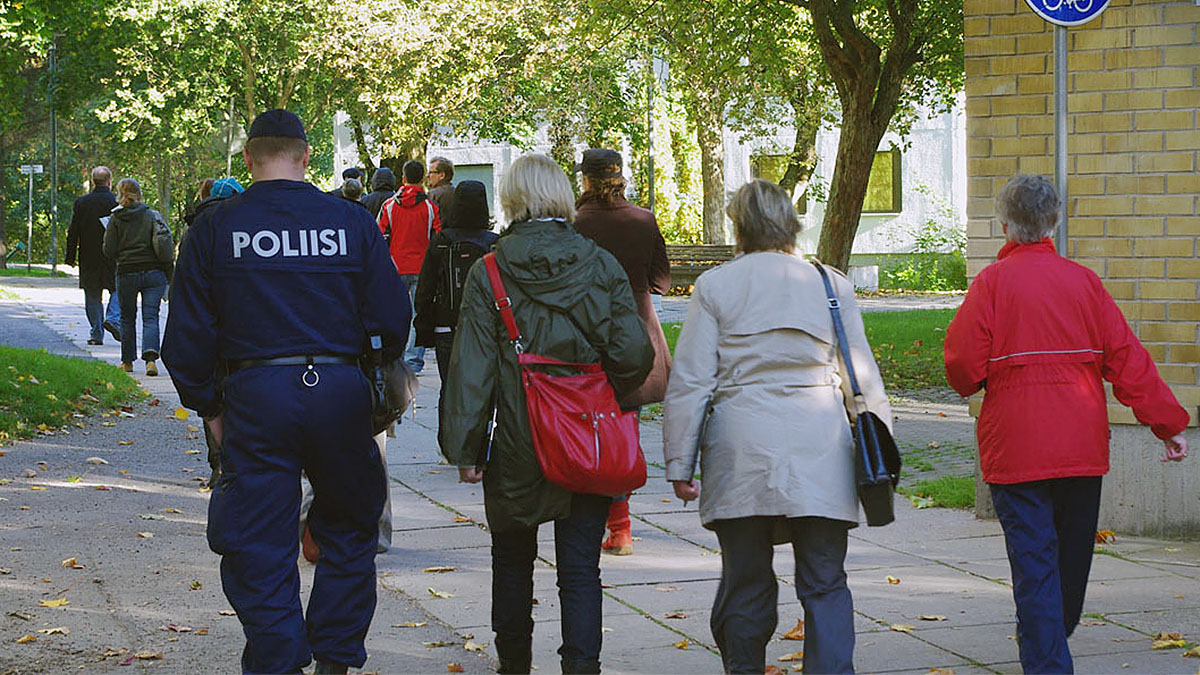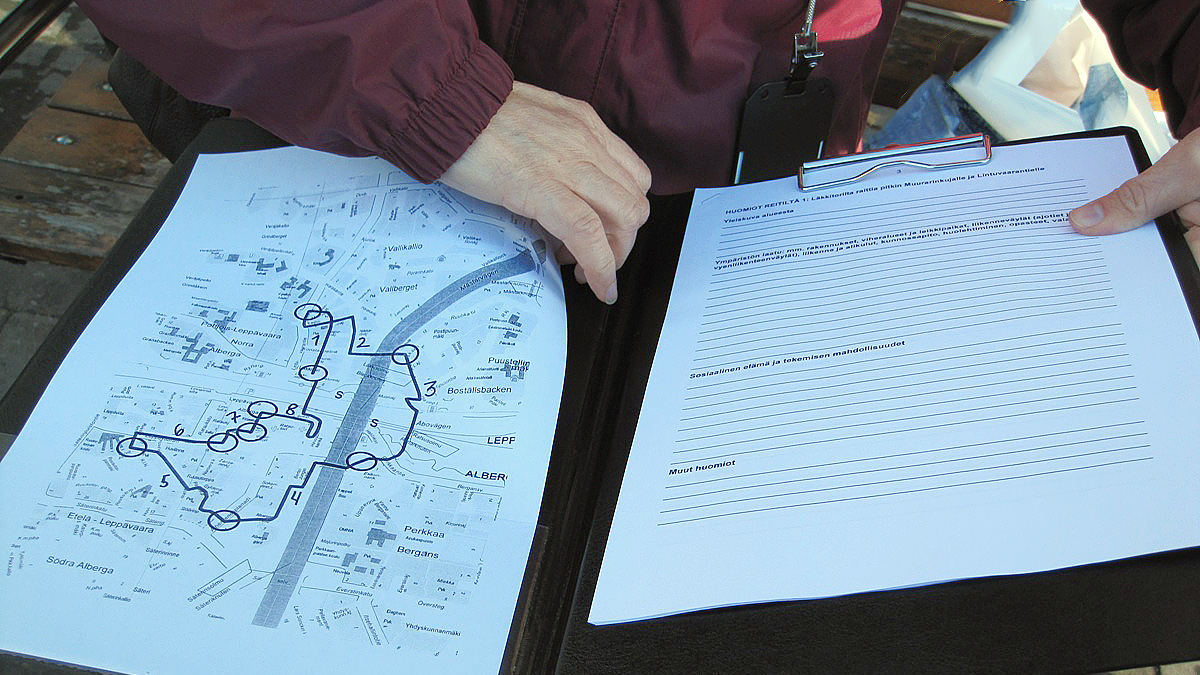Safety walks
Creating a safe, equal and comfortable living environment together.

The safety walk is a way to get the residents, officials, organizations, companies and property owners as well as other central agents to meet each other and to talk about the unsafe or even dangerous areas within their living environment together with an expert. The ways to develop the areas and make them safer and more comfortable are discussed in these events. Also the areas and places that are perceived as safe and comfortable are noted, and the factors that influence this perception are reflected.
Numerous factors such as age, gender, experience and other background have an impact on how a person perceives different areas. This is why it is important that the safety walk is an occasion where people have the opportunity to talk about their own experiences of the area, and hear about the experiences of others. The feeling of safety is crucial in where and how people are on the move. The threat of ending up as a victim of a crime or an accident affects our decisions on this as well. This, again, affects what people do and what are the possibilities in meeting other people. Essentially, the feeling of safety is connected to democracy and justice since it affects the possibilities to move about outside one´s home at different times of the day and in different areas.
A safety walk can be carried out in multiple ways and for multiple purposes. For example, the purpose can be to gain as broad and common information from an area or to especially see the needs of a specific target group or a certain part of a physical environment. Safety walks can be carried out in order to gain information on changes in an area or in order to follow up the maintenance of an area. Safety walks can be organised both in day light as well as after dark, so that a perception of the area can be created both at day and in the evening.
The background of the safety walks
The safety walks began in Göteborg, Sweden, at the beginning of the millennium. The basic idea is that by hearing out as many as possible, a better overall picture of the safety state of an area will be acquired. The method has been applied e.g. to residential areas, schools and in the planning and constructing of new buildings.
The safety walks are a good way of acquiring information on the safety problems of an area directly from the residents and other people who use the premises. In safety walks the residents and other agents (such as city planners, organizations and service providers) can inspect and assess the physical and social environment of the area. The method enables both open dialog and cooperation, and it gives the residents an opportunity to have an influence on their own living environment as well as to get motivated in the enhancing of the safety of their own area. The starting point is that the residents and other people who use the region actively are the ones who have the best knowledge of the area and this resource can be utilized. The information gathered by the safety walks can be used as the basis for decision making and measures of development.
In Sweden, the safety walks have led to concrete actions and to a safer environment. The safety walks have been carried out in Finland too, especially in the bigger cities, but they have been very different from each other, and thus the information gathered from them has not been possible to distribute actively. The guide to arranging a safety walk is based on the safety walk guides drawn up in Sweden, and produced by Tryggare och Mänskligare Göteborg, the Swedish apartment bureau and Swedish council for crime prevention. The concept of the safety walk was first implemented by architect Gerd Cruse Sondén and it has been developed by cultural geographer Mia Andersson-Ek. The guidelines have been adjusted to Finnish conditions and the experiences received from The Safety Walks in Espoo project have been used and in the preparation of the guide.
Putting the safety walk into practice

All sorts of things emerging along the safety walk is observed. Attention is directed at the specific, unique aspects of an area:
- How does the area seem and look like as a whole, and what are the most beautiful and the ugliest places? Where are the places that seem the safest and those that seem the most unsafe?
- What is needed in order to better the maintenance? Are there enough of trash bins?
- Is there vandalism? Where and what type of vandalism? Are the reparations made quickly?
- What do the trees and other green spaces of the area look like? Should thinning be done in order to improve visibility? Should they be added? Where, and what types of green spaces?
- Is it easy to places in the area? Are there guideposts or is there a need for maps and signs?
- Is the lighting in the right spot and is it functional? Is there a need for more? Which places can be less lit?
- Does an area consisting of office buildings and business spaces empty at some times of the day?
- How do the stairs, railings and paved areas work? Do they require attention?
- Can the area cause problems for visually impaired, hearing impaired or for the physically disabled?
- Are there enough of park benches? How do they look like? Who are the ones who use them?
- What is possible to improve in a short time span and again, in a long time span?
The safety walk route could consist of the following places and areas:
- streets that are meant for walking and biking
- streets with traffic
- underpasses
- public transport stops
- parking places
- the yards and entrances of residential buildings
- market places and other meeting places
- schools and kindergartens
- playgrounds